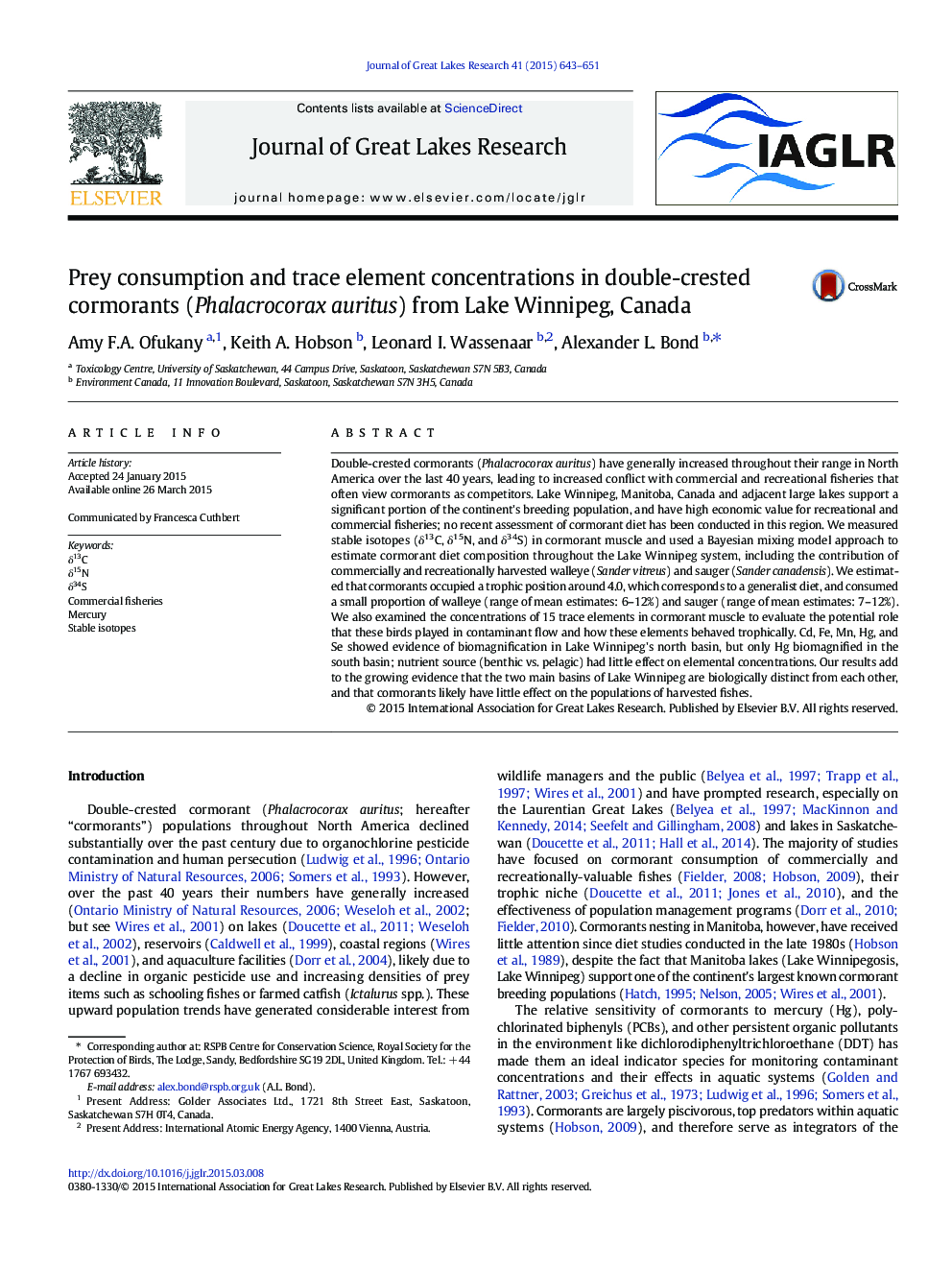| Article ID | Journal | Published Year | Pages | File Type |
|---|---|---|---|---|
| 6305052 | Journal of Great Lakes Research | 2015 | 9 Pages |
Abstract
Double-crested cormorants (Phalacrocorax auritus) have generally increased throughout their range in North America over the last 40 years, leading to increased conflict with commercial and recreational fisheries that often view cormorants as competitors. Lake Winnipeg, Manitoba, Canada and adjacent large lakes support a significant portion of the continent's breeding population, and have high economic value for recreational and commercial fisheries; no recent assessment of cormorant diet has been conducted in this region. We measured stable isotopes (δ13C, δ15N, and δ34S) in cormorant muscle and used a Bayesian mixing model approach to estimate cormorant diet composition throughout the Lake Winnipeg system, including the contribution of commercially and recreationally harvested walleye (Sander vitreus) and sauger (Sander canadensis). We estimated that cormorants occupied a trophic position around 4.0, which corresponds to a generalist diet, and consumed a small proportion of walleye (range of mean estimates: 6-12%) and sauger (range of mean estimates: 7-12%). We also examined the concentrations of 15 trace elements in cormorant muscle to evaluate the potential role that these birds played in contaminant flow and how these elements behaved trophically. Cd, Fe, Mn, Hg, and Se showed evidence of biomagnification in Lake Winnipeg's north basin, but only Hg biomagnified in the south basin; nutrient source (benthic vs. pelagic) had little effect on elemental concentrations. Our results add to the growing evidence that the two main basins of Lake Winnipeg are biologically distinct from each other, and that cormorants likely have little effect on the populations of harvested fishes.
Related Topics
Physical Sciences and Engineering
Earth and Planetary Sciences
Earth and Planetary Sciences (General)
Authors
Amy F.A. Ofukany, Keith A. Hobson, Leonard I. Wassenaar, Alexander L. Bond,
